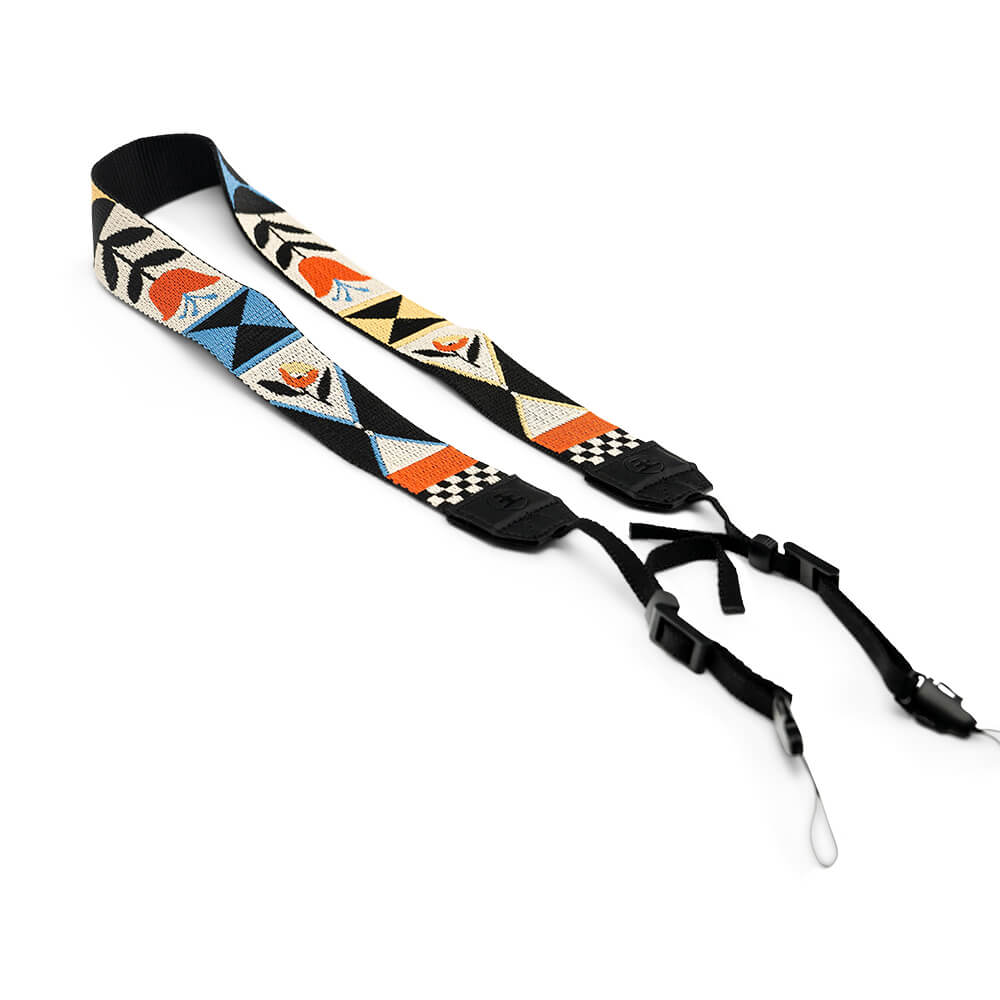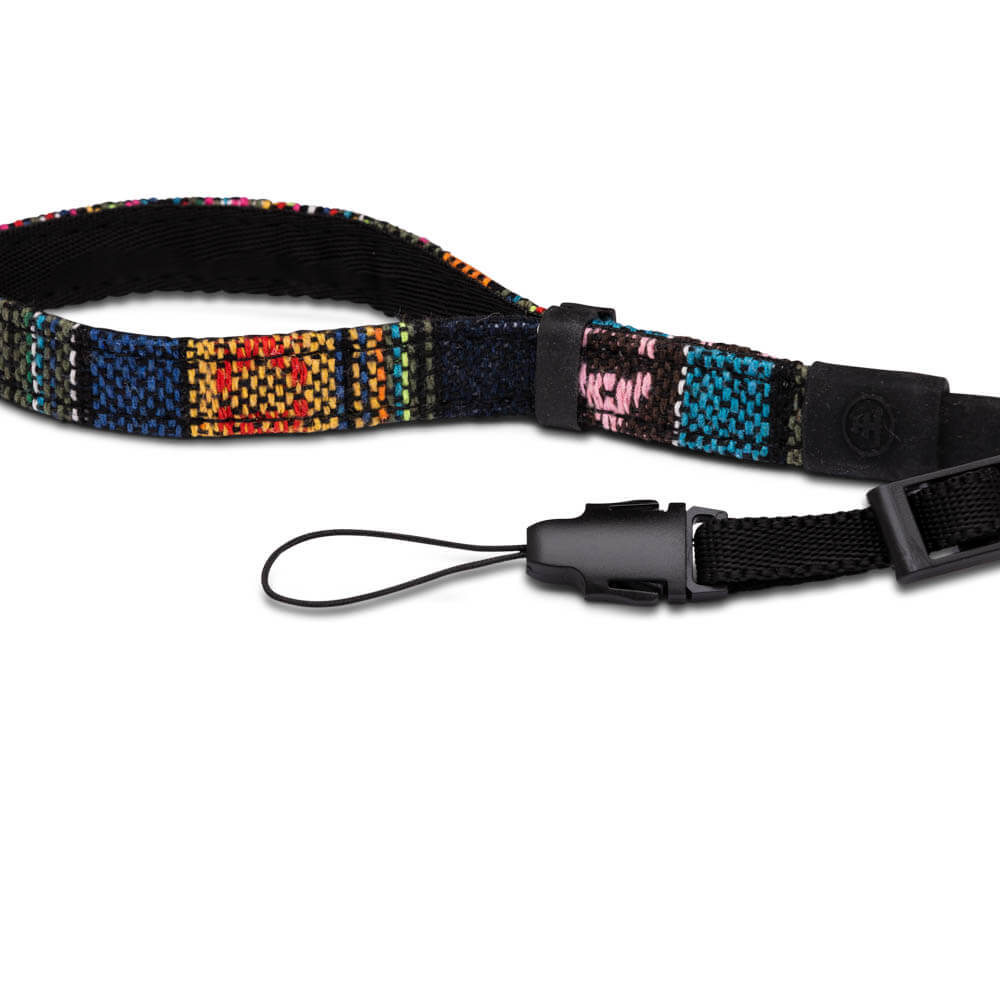Nocs Naturalist
Sara Lopez
Hi there, Sara! Thank you for joining us. We’re curious if you can introduce yourself and how you are spending your time these days?
My name is Sara Lopez and I am a conservation educator, eco-cultural storyteller, and environmental activist that was raised on the border of Texas and Mexico. These days I run a project called the Jungle Journal, where through various mediums I educate audiences about our current climate reality. These days I have been focusing primarily on what’s happening in the Americas.
You’ve built The Jungle Journal around listening. What first called you to this kind of storytelling — and how has that call evolved?
I’ve always been a listener especially to voices and perspectives that are often marginalized or overlooked in our society. My
20s were a deeply experimental phase where I spent time traveling, immersing myself in different cultures and geographies all
over the world. I chose experiences that pushed me out of my comfort zone, absorbing everything around me like a sponge.
I found myself especially drawn to cultures with a deep connection to the land and their ancestral roots. I was also drawn to
stories of those who had been disconnected from them. Over time, I noticed a pattern: that disconnection from one’s cultural
roots was almost always mirrored by a disconnection from the natural world.
This position of being the interviewer or listener has evolved in the last couple of years where I started to connect with
audiences directly, mainly Latino(x)s, sharing the importance of connecting back to their ancestral lands through climate
storytelling. I’ve done this in classrooms and in public spaces like cultural institutions or bookstores to bring awareness to
communities and ecosystems under threat.
You write often about decolonizing travel and narrative — what does that look like in practice, both internally and out in the field?
That’s a very good question. I think one of the most important things we must do is to better understand the privilege we
carry into any space but especially when we are visitors in someone else’s land. Instead of looking for experiences to
entertain us, we should seek out experiences that help us connect more with the people and the lands we are visiting, building
bridges with locals.
I think we have a long way to go before we see some kind of justice around the ways local communities are exploited for the
sake of visitors' entertainment but that is a start.
Can you share a moment from your journeys where someone’s story shifted the way you see the world — or your own place in it?
I had been spending several days on a Maasai camp with the intention to interview a particular Maasai chief named Salaton.
For our interview, he had instructed me to meet him at 5:00 AM at this white quartz rock that was up the hill from where the
base camp was. When we met there he started talking about how special this rock was and how it possessed special healing
powers and how it had been used by the Maasai for generations, ever since his community had settled in the area.
Before we continued up the hill, Salaton wanted to pray over this rock in reverence, thanking the land and the forces that
created it. So we stood there touching this rock where he then started to pray to “Nkai”, their creator God.
While this was happening we started to hear the cries of hyenas, calling out to each other. We probably stood there for about
10 minutes before we continued our way up the hill.
Once we had made it to the top of the hill we began a conversation that will remain one of my most memorable to date. Salaton
started spitting wisdom about life, what we are doing wrong in the West. He had strong opinions of being able to hold two
truths at once, for instance, being able to go for a formal education or training but still preserving and maintaining your
culture. He was also deeply critical about the ways in which elders are treated in Western society and was appalled by the
concept of nursing or “Elderly” homes. It was a fireside chat with one of the standing elders of the Maasai community, and
that was pretty incredible.
That conversation changed a lot of the ways I would think about some of these concepts. Even inspiring me to even follow some
of his advice as well.
Your work is deeply collaborative. What does it mean to earn trust in the spaces and communities you move through?
Depending on the community this has taken time. Sometimes years. With the Lacandon Maya community in Chiapas, Mexico this has
taken years to get to the level of trust that we have now. A lot of times what people are working up against are
historical/colonial wounds that have lasted for centuries. Earning trust with them for example has been an honor because it is
rooted in a continued friendship and relationship with the community.
So there are some communities that one could say are not the most “inviting.” That is sometimes a colonial consequence and
sometimes it's just a strategy some communities have to protect themselves, which is definitely understandable. There’s been a
lot of betrayal historically speaking.
Then there are other times where there is a shared goal and it won’t take as long to gain the trust because that shared goal
is recognized.
You often speak to the power of slowness — slow craft, slow travel, slow listening. How does this philosophy guide the way you move and create?
This philosophy allows for deep intention – which to me is one of the most important forces on this planet. Everything I create and everything I do is from that space.
What does your field kit look like—what tools, objects, or rituals support you when you’re gathering stories in remote places? How are Nocs improving your studies?
My field kit looks like a Jungle Journal backpack, a pack of electrolytes, my water bottle, sunscreen, a notebook, my phone,
and the Field Issue binoculars in Oxblood Maroon, especially if I am going somewhere tropical or with great bird watching.
A ritual I have is walking around extensively on foot in the location I’m in. I want to feel the layout of the land and
connect with it as much as I can.
I started to use NOCS when I rolled out some of my first conservation education lectures to a few of the school districts down
there in the South Texas region. I can always see what species are passing through, and it's cool because I have seen birds in
my hometown region that I have seen in Central America and South America. A recent one I saw driving back north from the
border was the Crested Caracara, a raptor that is featured in Aztec mythology and in fact there is a historical and ecological
debate that this was the bird (not an eagle) that Mexicas observed when they found a said “eagle” perched on a cactus holding
a snake. That was their cue to build Tenochtitlán.
In the fall and spring especially, you will see some of the coolest bird species that are either making their way down south
towards the tropics or they are making their way back up.
What gives you hope right now in this work of cultural preservation, environmental care, and collective memory?
It gives me hope that there is a genuine interest for people to reconnect with their ancestry. And I think through that, there is an interest to reconnect to the land. So that makes me hopeful. I’ve spoken to people from all different walks of life who have this common interest to find out more about the lands where their ancestors came from.
We’d love to keep in touch with you! Can you tell us what’s on your calendar and how we can follow along and support your work?
The Jungle Journal doesn’t have any public events scheduled at the moment, but we encourage you to keep following us on Instagram @the_jungle_journal_ or visit the new official website www.thejunglejournal.earth to stay tuned for upcoming creative projects and collaborations. We’re especially excited about a developing docu-series that will resonate with anyone passionate about nature, history, and cultural storytelling. More details to come soon.













